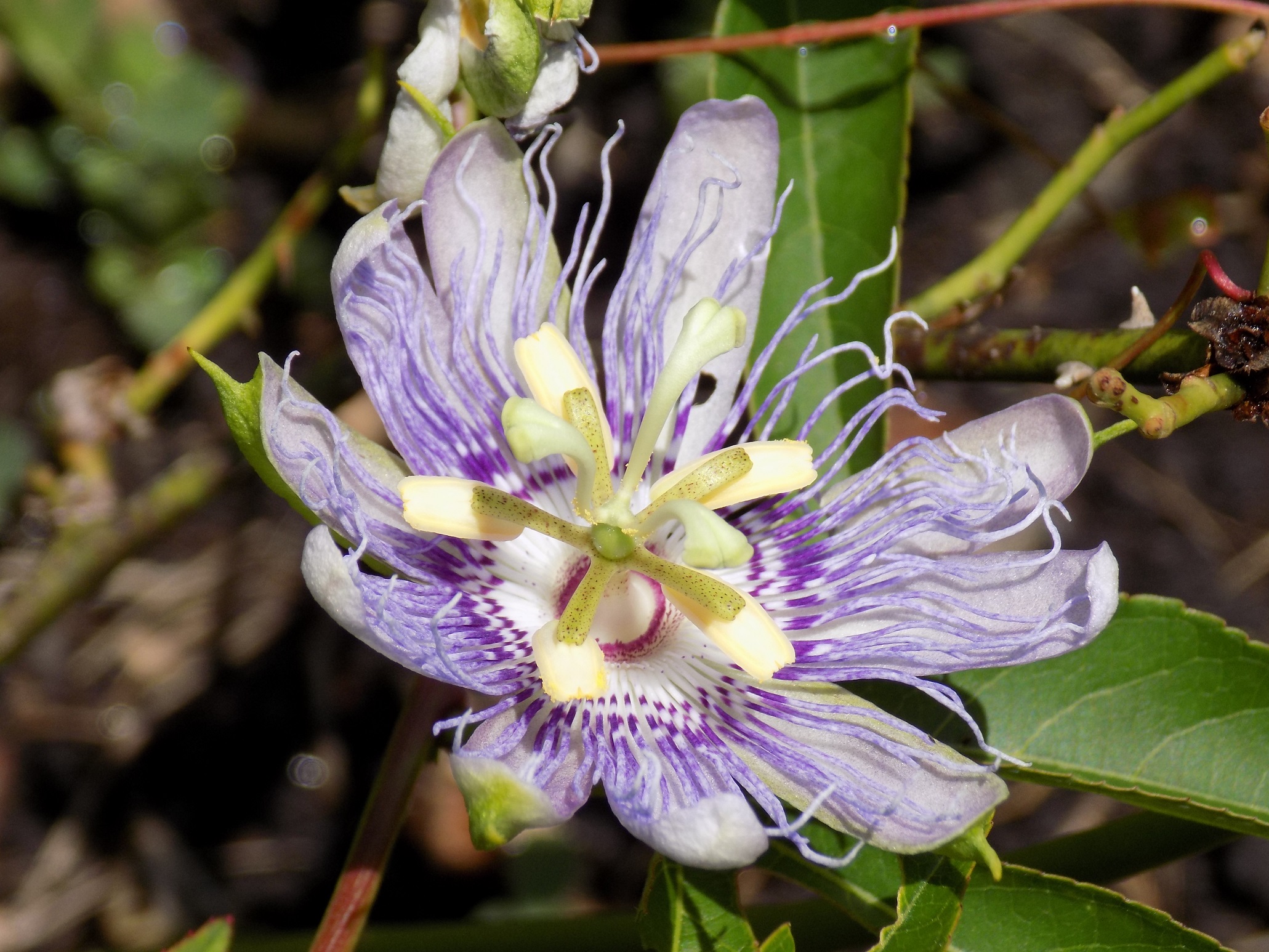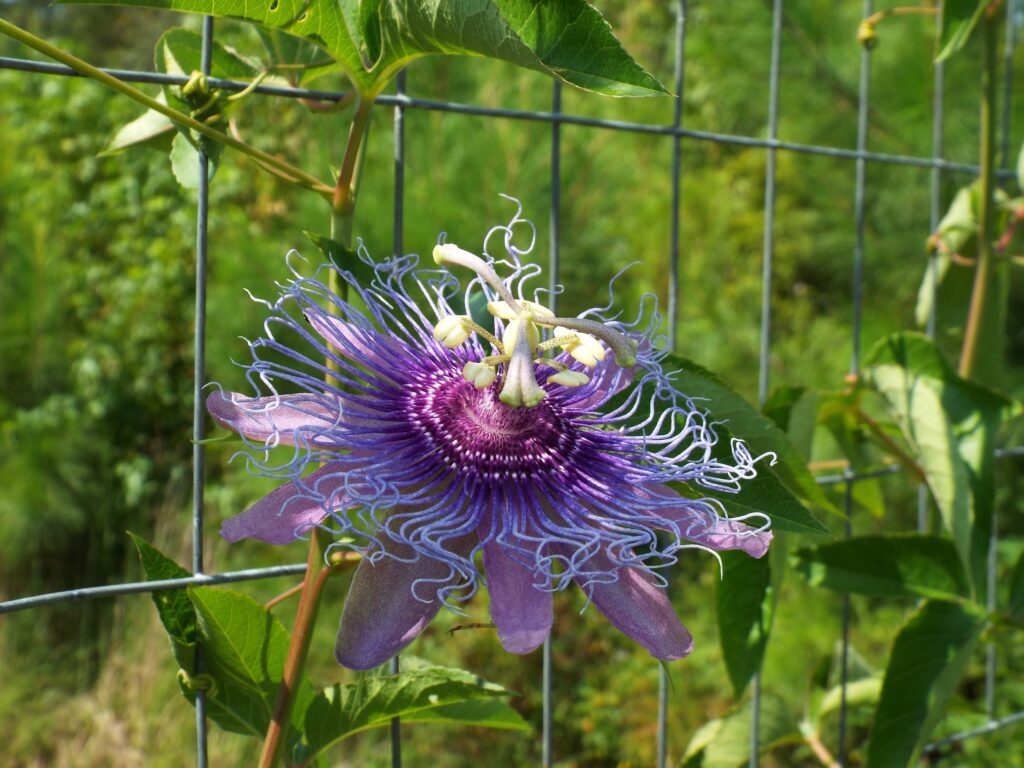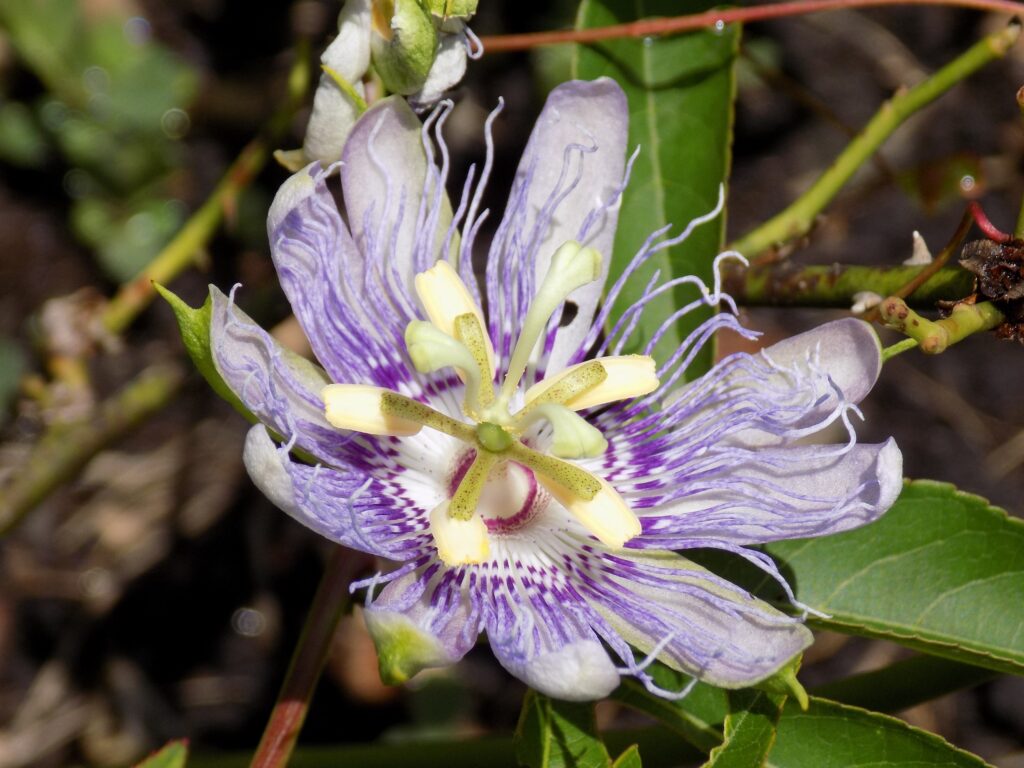



Today we’re starting a new weekly social media series called Flora and Fauna Friday where we focus on a facet of the flora and fauna found on Edisto Island. Each week we’ll post about a different plant or animal that you should be on the look for that week around the Island. We’ll also try to tell you a little bit about their biology and ecology.
To kick off Flora and Fauna Friday we have the beautifully intricate flower of the Purple Passionflower, also called Maypop, (Passiflora incarnata). This flower was blooming in the front yard of the Hutchinson House yesterday, one of the properties the EIOLT protects.
Purple Passionflower is native to SC and found throughout the southeastern United States. It loves sunny areas on the edges of pastures, roadsides, powerline right-of-ways, thickets, and other disturbed habitats. Purple Passionflower grows as a vine that climbs using tendrils and has large, 3-lobed leaves.
The plants bloom from late spring through the end of summer and display a large, complex violet and white flower. The flowers are as showy as they are because they require pollinators to produce seeds. This makes them a favorite of bees. Purple Passionflower is also a favorite of the Gulf Fritillary, Variegated Fritillary, and Zebra Longwing butterflies. Not just for the flower’s nectar but as a place to lay their eggs. All three of these butterflies host and feed on Passionflowers as caterpillars.
Once a flower is pollinated, it will begin to produce a green fruit, roughly the size and shape of an egg. Once ripe, the fruits are edible. Purple Passionflower is a close relative of Passionfruit (Passiflora edulis) but the fruit is fairly bland compared to its tropical relative. The fruit can be eaten whole raw but the flesh surrounding the seeds is the most palatable. It can also be boiled or strained to make juice or jam. The fruit is also where the plants get the common name of “Maypop”. If you’re not careful when walking along the edge of a field, you might step on a Purple Passionflower fruit and it MAY POP with a loud popping sound, startling you and spraying seeds across the ground.
Come winter, Maypops lose what leaves the caterpillars didn’t eat and then die back to the ground. Lucking, they’re perennials and will return the following spring to flower anew.
Purple Passionflowers do great in backyard gardens, as long as it gets enough sun. It loves to grow up fences and trellises but will also grow just fine along the ground or over the top of small bushes. Purple Passionflower is also a sure fire way to get butterflies into your garden. A single Purple Passionflower vine can feed more than 50 caterpillars each year. Just make sure you have enough Passionflower leaves to go around or the caterpillars might strip it down to nothing. And once you have butterflies, make sure you have enough fall flowers to feed them!